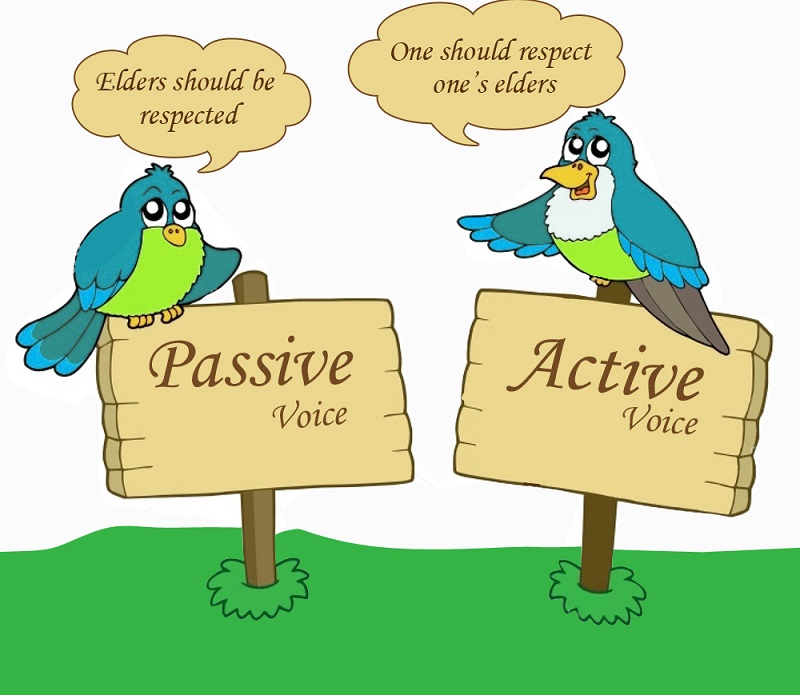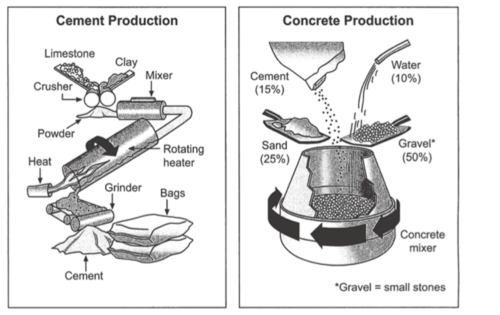PASSIVE VOICE (Câu bị động) – Cấu trúc theo các thì, bài tập chi tiết
Câu bị động – PASSIVE VOICE là một phần kiến thức ngữ pháp quan trọng mà các bạn cần nắm vững khi bước vào ôn luyện cho kỳ thi IELTS của mình. Vì thế, hãy ôn luyện và ứng dụng câu bị động chính xác nhé.
Bài học hôm nay, chúng ta sẽ cùng tìm hiểu về câu bị động với cấu trúc câu, cách sử dụng theo các thì và bài tập thực hành dưới đây.
Câu bị động là gì?
Câu bị động là câu được dùng khi muốn nhấn mạnh đến đối tượng chịu tác động của hành động hơn là hành động đó. Theo mỗi thì sử dụng thì cấu trúc của câu bị động cũng thay đổi theo.
Cùng xem chi tiết qua video sau:
Cấu trúc câu bị động
Công thức tổng quát
Câu bị động có thể được chuyển đổi từ câu chủ động có chứa ngoại động từ, tức là phải có một đối tượng bị chủ thể tác động lên. Khi đó, ta đổi vật thể bị tác động lên làm chủ ngữ, còn chủ thể thực hiện hành động có thể được nhắc đến hoặc không.
S + (aux) + be + V3 + (by + n)
Câu bị động được dùng trong trường hợp người nói muốn nhấn mạnh vật thể bị tác động.
Cấu trúc câu bị động ở dạng thì nào thì chia tobe theo thì đó mà các bạn cùng tìm hiểu dưới đây.
Nếu câu có động từ và hai tân ngữ thì muốn nhấn mạnh tân ngữ nào thì thường sẽ dùng tân ngữ đó chuyển thành chủ ngữ bị động. Trong trường hợp chung, tân ngữ được chọn là tân ngữ gián tiếp.
Ví dụ: I gave him a book = I gave a book to him = He was given a book (by me).
Tuy nhiên, bạn cần lưu ý 2 điểm sau:
1. Nếu S – chủ ngữ trong câu chủ động là: they, people, everyone, someone, anyone, etc => thì không cần đưa vào câu bị động
Ví dụ: They stole my motorbike last night. (Bọn chúng lấy trộm xe máy của tôi đêm qua)
➤ My motorbike was stolen last night. (Xe máy của tôi đã bị lấy trộm đêm qua.)
2. Nếu là người hoặc vật
➤ Trực tiếp gây ra hành động thì dùng chuyển sang bị động sẽ dùng ‘by’
E.g: She is making a cake => A cake is being made by her.
➤ Gián tiếp gây ra hành động thì dùng ‘with’
E.g: A door is opened with a key
Câu bị động thì hiện tại đơn
Present simple
(Hiện tại đơn)
S + am/is/are (not) + V3
e.g.:
Active: The documentary doesn’t properly address global warming.
Passive: Global warming isn’t properly addressed in the documentary.
Bị động thì hiện tại tiếp diễn
Present continuous
(Hiện tại tiếp diễn)
S + am/is/are (not) + being + V3
e.g.:
Active: Paper bags are replacing plastic bags.
Passive: Plastic bags are being replaced by paper bags.
Bị động hiện tại hoàn thành
Present perfect
(Hiện tại hoàn thành)
S + has/have (not) + been + V3
e.g.:
Active: Some countries have replaced teachers by robots in the classrooms
Passive: Robots have been used in some countries to replace teachers in the classrooms.
Bị động quá khứ đơn
Past simple
(Quá khứ đơn)
S + were/ was (not) + V3
e.g.:
Active: Over 200 people built this castle in 1983.
Passive: This castle was built by over 200 people in 1983.
Bị động thì quá khứ tiếp diễn
Past continuous
(Quá khứ tiếp diễn)
S + were/ was (not) + being + V3
e.g.:
Active: The mechanic was fixing my car yesterday afternoon.
Passive: My car was being fixed by the mechanic yesterday afternoon.
Bị động quá khứ hoàn thành
Past perfect
(Quá khứ hoàn thành)
S + had (not) + been + V3
e.g.:
Active: They had moved the table to the living room before you arrived.
Passive: The table had been moved to the living room before you arrived.
Bị động tương lai đơn
Future simple
(Tương lai đơn)
S + will (not) be + V3
e.g.:
Active: The Congress will review the new policy.
Passive: The new policy will be reviewed by the Congress.
Bị động động từ khuyết thiếu
Modal verbs
(must, may, might, can, could, will, would, should, used to, have to, need to)
S + modal verb + be + V3
e.g.:
Active: The authority should practice the new law immediately.
Passive: The new law should be practiced immediately.
Bị động cấu trúc khác
Cấu trúc
Cấu trúc
“be going to”
S + is/are (not) + going to be + V3
e.g.:
Active: Santa Claus is going to give nice children Christmas presents tonight.
Passive: Nice children are going to be given Christmas presents by Santa Claus tonight.
Reporting verbs (tường thuật)
(agree, announce, argue, believe, claim, disclose, expect, hope, know, predict, report, say, suggest, think, understand)
It is + V3 + that + clause
e.g.:
Active: Many people expect that Hillary will become the new president.
Passive: It is expected that Hillary will become the new president.

Cùng xem thêm các dạng câu đặc biệt quan trọng trong tiếng Anh nữa nhé:
Bài tập có đáp án
Exercise 1: Chuyển các câu sau sang thể bị động.
- The waiter brings me this dish.
- ………………………………………………………………………………………………
- Our friends send these postcards to us.
- ………………………………………………………………………………………………
- Their grandmother told them this story when they visited her last week.
- ………………………………………………………………………………………………
- Tim ordered this train ticket for his mother.
- ………………………………………………………………………………………………
- She showed her ticket to the airline agent.
- ………………………………………………………………………………………………
- Jim baked this cake yesterday.
- ………………………………………………………………………………………………
- They are going to buy a new apartment next year.
- ………………………………………………………………………………………………
- The shop assistant handed these boxes to the customer.
- ………………………………………………………………………………………………
- The board awarded the first prize to the reporter.
- ………………………………………………………………………………………………
- Have you sent the Christmas cards to your family?
- ………………………………………………………………………………………………
- The committee appointed Alice secretary for the meeting.
- ………………………………………………………………………………………………
- Tom will give Anna a ride to school tomorrow.
- ………………………………………………………………………………………………
- They keep this room tidy all the time.
- ………………………………………………………………………………………………
- We gave Ann some bananas and some flowers.
- ………………………………………………………………………………………………
- They moved the fridge into the living room.
- ………………………………………………………………………………………………
Exercise 2. Cho dạng đúng của các động từ sau đây (có thể là chủ động hoặc bị động) để tạo thành một bài IELTS Writing Task 1 hoàn chỉnh.

The first diagram (1-illustrate) …………………… the process of cement manufacture, and the second diagram (2-show) …………………… the materials that go into the production of concrete.
It is clear that there are five stages in the production of cement, beginning with the input of raw materials and ending with bags of the finished product. To produce concrete, four different materials (3-mix) …………………… together.
At the first stage in the production of cement, limestone and clay (4-crush) …………………… to form a powder. This powder (5- then/ mix) …………………… before it passes into a rotating heater. After heating, the resulting mixture (6-grind) ……………………, and cement (7-produce) ……………………. Finally, the cement (8-package) …………………… in large bags.
Cement is one of the four raw materials that (9-use) …………………… in the production of concrete, along with gravel, sand and water. To be exact, concrete (10-consist) …………………… of 50% gravel, 25% sand, 15% cement and 10% water. All four materials are blended together in a rotating machine called a concrete mixer.
Exercise 3. Cho dạng đúng của từ trong ngoặc.
1. The war ……………………………….. next week.(DECLARE)
2. Your homework ……………………………….. by tomorrow afternoon.(MUST FINISH)
3. That house ………………………………… since I was a child. (NOT PAINT)
4. Smoking ……………………………….. in this hotel (NOT ALLOW)
5. After all the flights …………………………., the tourists checked in at the airport hotel. (CANCEL)
6. The car ……………………..…. for over a week. (NOT WASH)
7. He ………………………. a new contract last year. (GIVE)
8. This song ………………………………..by the Beatles in 1967. (WRITE)
9. The earth …………………………… if we try hard enough to do something (CAN SAVE)
10. The new bridge ……………………………….. at the moment. (BUILD)
ĐÁP ÁN
Exercise 1.
1. This dish is brought to me by the waiter.
2. These postcards are sent to us by our friends.
3. They were told this story by their grandmother when they visited her last week.
4. This train ticket was ordered for Tom’s mother by him.
5. Her ticket was shown to the airline agent by her.
6. This cake was baked by Jim yesterday.
7. A new apartment is going to be bought next year.
8. The customer was handed these boxes by the shop assistant.
9. The first prize was awarded to the reporter by the board.
10. Have the Christmas cards been sent to your family?
11. Alice was appointed secretary for the meeting by the committee.
12. Anna will be given a ride to school by Tom tomorrow.
13. This room is kept tidy all the time.
14. Ann was given some bananas and some flowers (by us).
15. The fridge was moved into the living room.
Exercise 2.
1. illustrates
2. shows
3. are mixed
4. are crushed
5. is then mixed
6. is ground
7. is produced
8. is packaged
9. are used
10. consists
Exercise 3.
1. will be declared
2. must be finished
3. hasn’t been painted
4. is not allowed
5. had been canceled
6. hasn’t been washed
7. was given
8. was written
9. can be saved
10. are being built
Trên đây là bài học về câu bị động – ngữ pháp quan trọng trong IELTS. Các bạn hãy chú ý học và thực hành để nắm vững dạng câu này nhé! Nếu còn bất cứ thắc mắc nào thì hãy cmt ngay dưới đây để IELTS Fighter giải đáp nhé!
